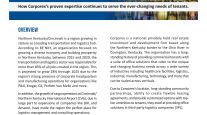UCR Fees to Remain Unchanged for 2013
This story appears in the Dec. 17 print edition of Transport Topics.
Unified Carrier Registration program fees will remain unchanged in 2013, and the organization will seek to collect the fees from more interstate carriers, forwarders and brokers, the group’s chairman said.
Avelino Gutierrez, who is also an attorney in the New Mexico Public Regulation Commission, told Transport Topics that the amount collected in 2012 was $98.2 million as of early December, the highest ever.
Gutierrez said he expects the collections to reach nearly $100 million by the end of the year and that the board hopes to increase collections even more in 2013 by increasing the percentage of carriers that pay the registration fees.
Fees remain at $76 for the smallest group of carriers, those with five or fewer power units, and for brokers. The highest fee is $73,346 — for fleets with more than 1,000 tractors.
The Unified Carrier Registration program collects money from for-hire and private carriers that register their equipment in all 50 states by making a single payment to a state agency. Money that is collected is pooled and then distributed based on a formula to each state, where the funds are used to cover the costs of motor carrier enforcement.
“The program is going along pretty well,” said Stephen Keppler, executive director of the Commercial Vehicle Safety Alliance. “It’s amazing when you look back at the transformation that has occurred so quickly.”
Like Keppler, Robert Pitcher, vice president for state laws at American Trucking Associations, is pleased with the overall direction and progress of the UCR program.
“The actual mechanics of a carrier paying its fees is going very smoothly,” said Pitcher, who praised the UCR program developed by the state of Indiana for making the registration process easy for carriers.
The program was created to replace the Single State Registration System that was used for the same purpose. After it was implemented, the UCR program fees were nearly doubled two years ago because revenue collected from the fees was falling short of earlier targets (5-3-10, p. 1).
The new target of $107 million raised annually was set by the Federal Motor Carrier Safety Administration in a 2009 rulemaking that also set the new fee structure.
Fee notices were sent out Oct. 1, with payment required by Jan. 1, Gutierrez said. If a carrier doesn’t pay, it receives a follow-up notice to obtain payment. “The program still isn’t meeting its revenue targets,” Keppler said. “That is still an issue.”
Because the fees haven’t been raised since the 2010 increase, he said, they are not keeping up with inflation.
Pitcher said one reason why the fees are remaining stable is board members believe that if the fees are raised, it will give an even greater incentive for those who are tempted to evade the program to do just that.
Another reason, Pitcher said, is that FMCSA has made it clear that the agency would not approve higher fees unless there was an increase in compliance.
While disappointed with the amount collected, Keppler said he was pleased with the program’s overall progress. “There has been a lot done to help move this process in the right direction. It is a very important program to the states.”
One area that has been enhanced, Keppler said, is enforcement. CVSA this month sent a bulletin covering enforcement that is done through FMCSA compliance reviews and during roadside inspections.


